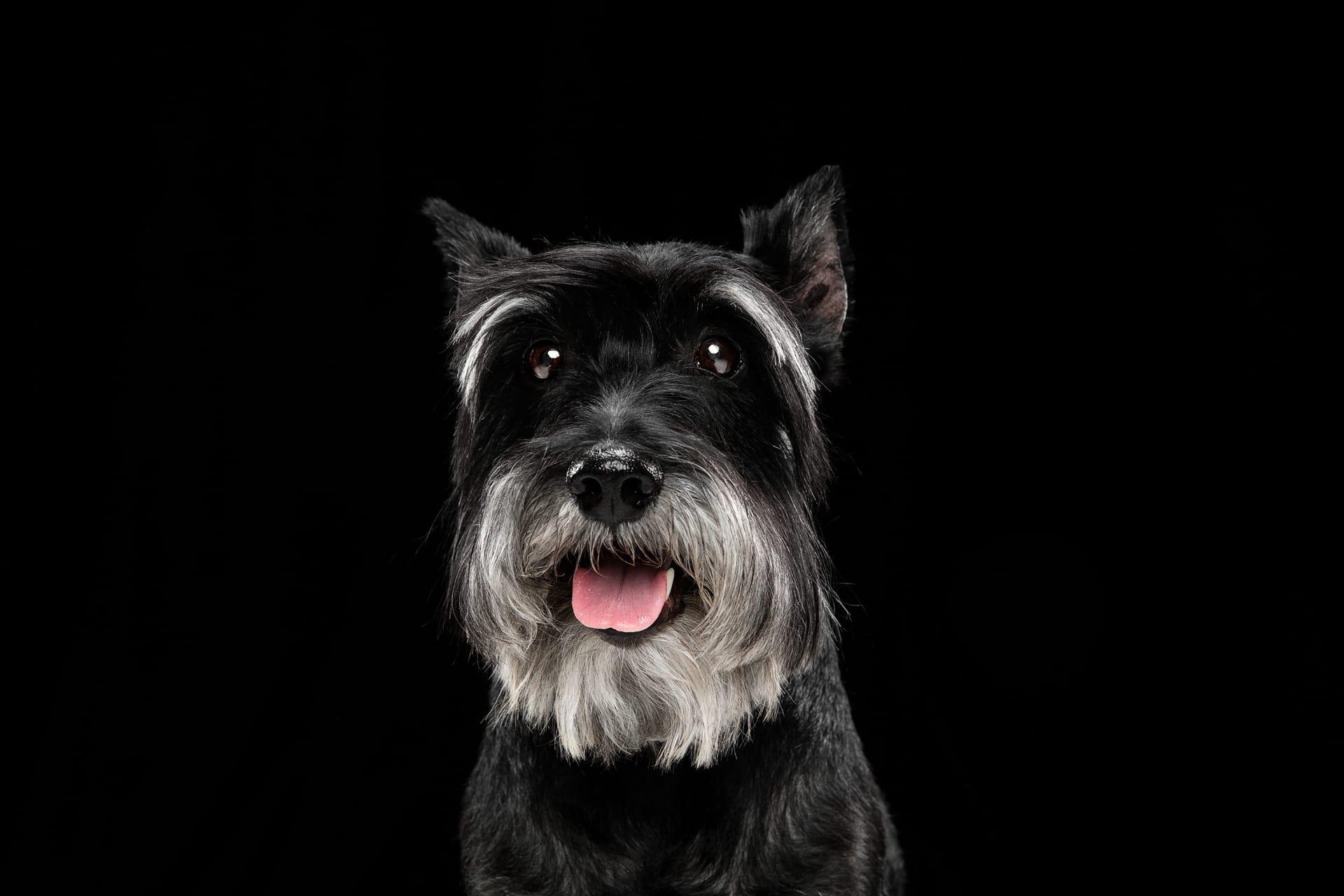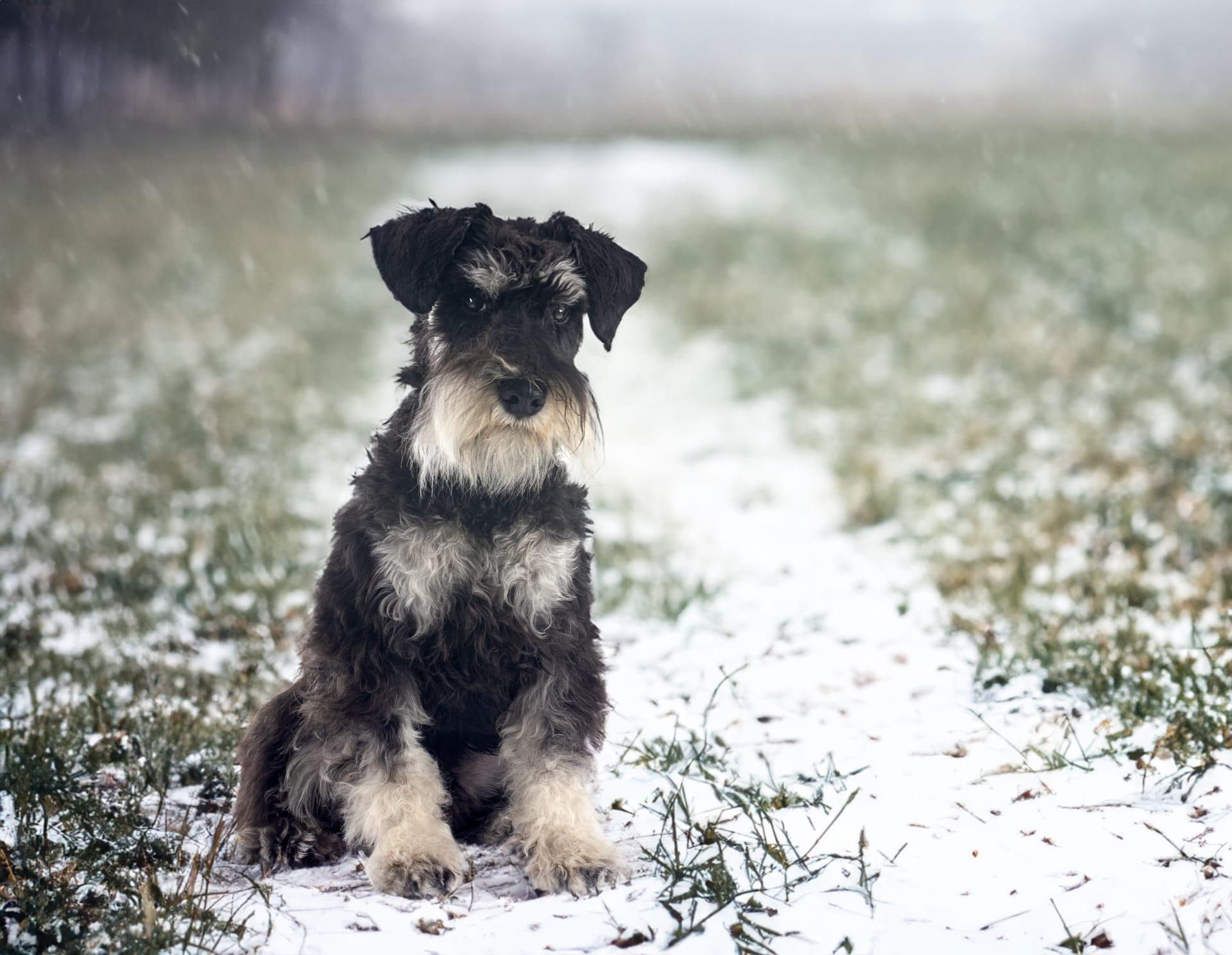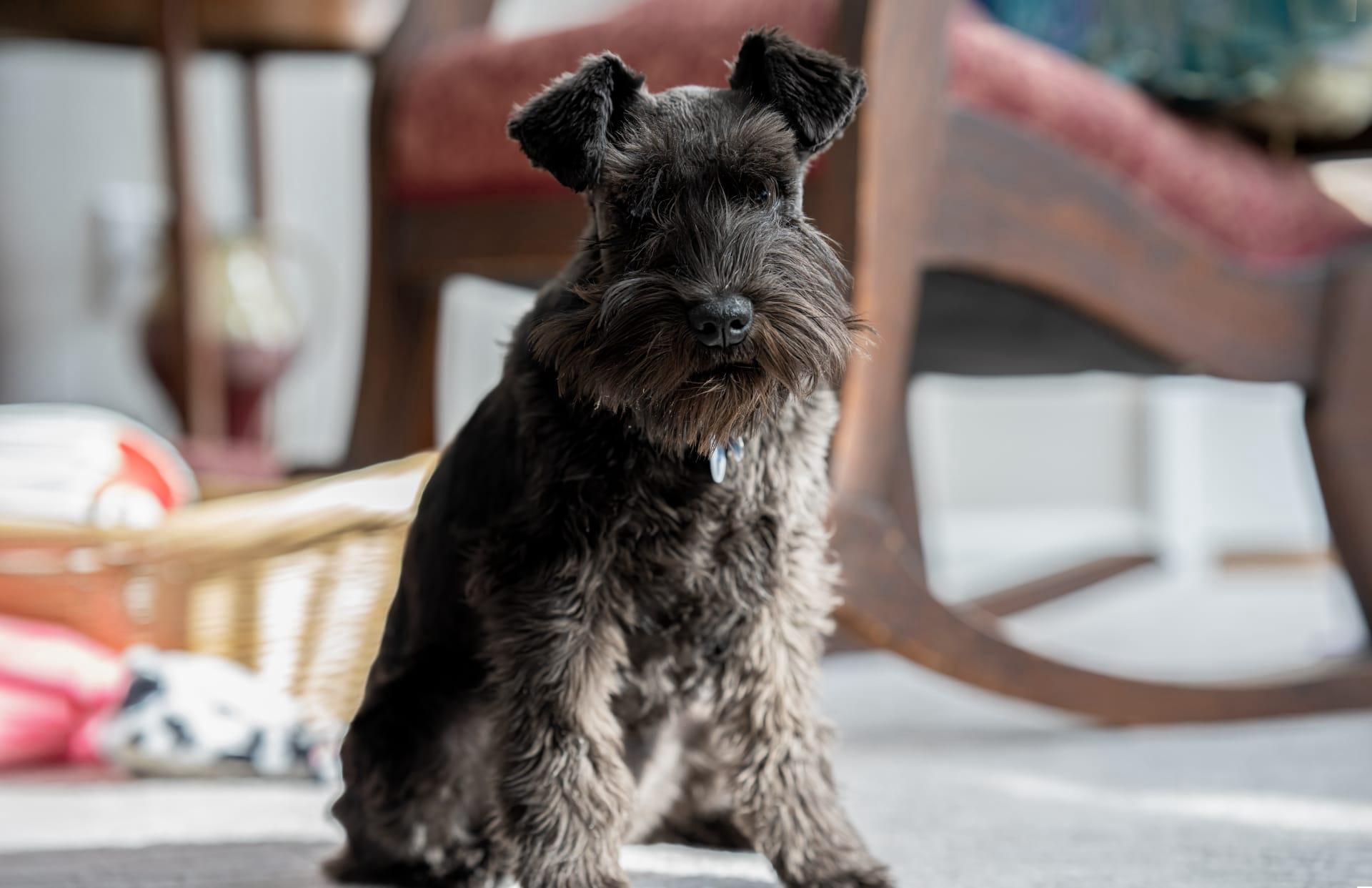1
Miniature Schnauzers, originally bred in Germany during the late 19th century, were developed by crossing the standard Schnauzer with smaller breeds such as the Miniature Pinscher and possibly the Affenpinscher. This breeding was aimed to create a smaller version of the Schnauzer that excelled in ratting due to its keen sense of smell and agility. With an average weight of 11 to 20 pounds (approximately 5 to 9 kilograms) and standing 12 to 14 inches (about 30 to 36 cm) tall at the shoulder, their compact size made them exceptionally good at navigating the German farmlands for pests.
These dogs are known for their distinctive appearance, characterized by a wiry coat, bushy eyebrows, a walrus-like mustache, and a robust beard, which not only gives them a unique, wise look but also serves a practical purpose. The wiry coat is hypoallergenic, shedding less than other breeds, making them a great option for families with allergies. Additionally, their facial hair protects them from bites and debris while burrowing through underbrush during their ratting expeditions, showcasing a blend of form and function unique to their breed.

2
Miniature Schnauzers possess a vibrant personality, often described as alert, spirited, and friendly. They are known for their intelligence and are ranked as one of the most trainable breeds. This intelligence, combined with their eagerness to please, makes them excellent candidates for various dog sports, including agility and obedience competitions. Their problem-solving skills are notable, often requiring engaging toys and puzzles to keep them mentally stimulated and prevent boredom.
Apart from their working capabilities, Miniature Schnauzers are also cherished for their loyalty and protective nature, making them superb watchdogs. Despite their small size, they have a big bark, which they use effectively to alert their owners of any unusual activities. Their protective instinct, coupled with their intelligence, means they can be discerning about threats, rarely resorting to unnecessary barking. This characteristic makes them well-suited for families looking for a small but capable guardian.

3
The Miniature Schnauzer is among the few breeds that have a consistent salt and pepper coat color, which is the most common, alongside solid black, black and silver, and white. This unique coloration is achieved through a specific genetic combination, resulting in banded hairs that give the salt and pepper appearance. This distinct coloring, along with their double coat—a soft undercoat and a wiry outer coat—requires regular grooming to maintain their distinctive Schnauzer look and prevent matting.
Despite their small stature, Miniature Schnauzers have a relatively long lifespan, typically living 12 to 15 years. This longevity can be attributed to their robust health and the breed's rigorous breeding standards, which help mitigate common health issues. However, they are prone to certain genetic conditions, such as cataracts and pancreatitis, making regular veterinary check-ups essential to ensure they live a healthy and fulfilling life.

4
Originally bred as farm dogs, Miniature Schnauzers have a strong prey drive, which can be observed in their playful and sometimes tenacious behavior. They excel in activities that simulate their natural instincts, such as chase and fetch games, which not only provide physical exercise but also mental stimulation. This instinct, however, means they might chase small animals if not properly trained or supervised, highlighting the importance of early socialization and training for these energetic companions.
Miniature Schnauzers are also known for their adaptability, thriving in various living situations, from apartments to large homes with yards, as long as they receive adequate exercise. Their size and temperament make them suitable for urban living, provided they have regular walks and playtime. This flexibility, combined with their minimal shedding, makes them an ideal choice for a wide range of families, including those living in smaller, indoor spaces.

5
The breed's community-oriented nature means Miniature Schnauzers often excel in therapy work. Their gentle and intuitive demeanor, combined with their trainability and love for human companionship, makes them excellent therapy dogs. They have been known to provide comfort and support in hospitals, schools, and nursing homes, showcasing their versatile ability to connect and provide emotional support to those in need.
Miniature Schnauzers are remarkable for their vocal range. They don't just bark; they communicate with a variety of sounds, including growls, whines, and even 'talking'. This expressiveness is a testament to their social nature, allowing them to communicate their needs and desires effectively to their owners. It's this vocal prowess that often endears them to their families, making them not just pets but integral members of the household.